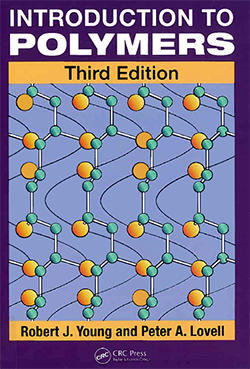Introduction to polymers

Introduction to polymers / Robert J. Young, Peter A. Lovell. - XX, 668 p. : il. ; 26 cm
ISBN - 978-0-8493-3929-5
Assunto - Polímeros
Thoroughly updated, Introduction to Polymers, Third Edition presents the science underpinning the synthesis, characterization and properties of polymers. The material has been completely reorganized and expanded to include important new topics and provide a coherent platform for teaching and learning the fundamental aspects of contemporary polymer science.
New to the Third Edition
- Reorganization and expansion of the content giving individual topics greater focus and deph;
- Synthesis: dendrimers, free-radical crosslinking, "living" radical polymerizations, metallocene polymerization, free-radical ring-opeing polymerizations, oxidative coupling polymerization, supramolecular polymerization and methods of block and graft copolymer synthesis;
- Characterization: polyelectrolytes, field-flow fractionation, methods of UV-visible, Raman, NMR and mass spectroscopy;
- Phase Structure and Morphology: macromolecular dynamics and reptation, liquid crystalline polymers, thermal analysis and multicomponent polymer systems;
- Properties: effects of chain entanglements, swelling of elastomers, impact behaviour, ductile fracture, rubber-toughening, polymer composites and eelctrical porperties of polymers;
While this edition adds many new concepts, this philosophy of the book remains unchanged. It continues to provide extensive, detailed and balanced coverage of important aspects of polymer chemistry and polymer physics, spanning synthesis, characterization, phase structure and morphology and mechanical and electrical properties of polymers.
Largely self-contained, the text cross-references topics between chapters where appropriate and fully derives most equations from first principles, highlighting the inherent assumptions, limitations and strengths in the use of each equation. All topics are illustrated with extensive reaction schemes and/or diagrams. Each chapter not only includes a list of further reading to help readers expand their knowledge of the subject, but also provides problem sets to test understanding, particularly of numerical aspects.





